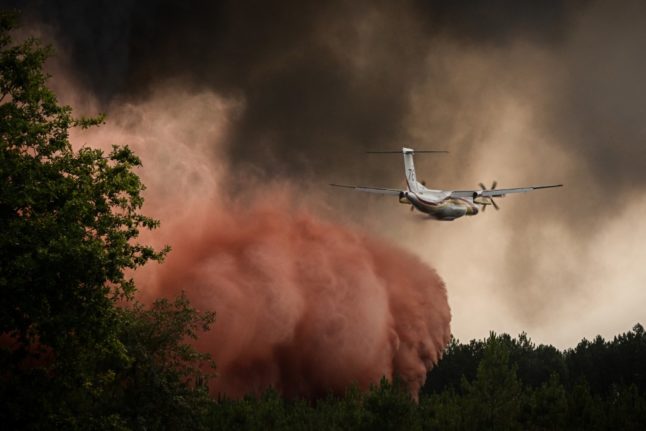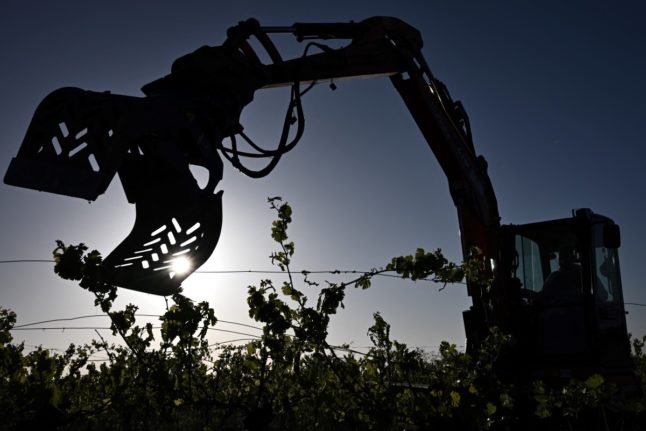The 40-kilometre active fire front in the Gironde and Landes departments around Bordeaux “has not developed, but the weather conditions are pushing us towards extreme vigilance”, deputy prefect Ronan Leaustic told reporters.
Temperatures stood at 39C in the fire zone, just like the day before.
No new evacuations had been ordered on top of the 10,000 people already asked to leave, Leaustic added.
But “temperatures continue to rise and the water table keeps falling”, he said.
EU members including Germany, Poland, Austria and Romania have pledged reinforcements totalling 361 firefighters to join the roughly 1,100 French ones on the ground, along with several water-bombing planes from the European Union fleet.
‘Helping you guys’
Many of the newcomers went into action on Friday.
“It doesn’t matter which country we’re in, we’re firefighters, we are able to help people around the world,” said Cristian Buhaianu, who commands a 77-strong firefighting contingent from Romania.
At the Merignac air base, near the southwestern city of Bordeaux, where Canadair planes and other firefighting aircraft are stationed, a Greek pilot said scenes of devastation like the ones seen in France were commonplace in his home country.
“We see this every year in Greece, and right now we see this in France,” the pilot, 36-year-old Anastasis Sariouglou told AFP. “We have the feeling of helping you guys and it’s nice.”
In the hard-hit area around the village of Hostens, the thick smoke seen on Thursday gave way to blue skies and occasional clouds.
France has been buffeted this summer by a historic drought that has forced water use restrictions nationwide, as well as a series of heatwaves that experts say are being driven by climate change.
The blaze near Bordeaux erupted in July — the driest month seen in France since 1961 — destroying 14,000 hectares and forcing thousands of people to evacuate before it was contained.
But it continued to smoulder in the tinder-dry pine forests and peat-rich soil.
Officials suspect arson may have played a role in the latest flare-up, which has burned 7,400 hectares since Tuesday.
‘Forced to adapt’
Fires in 2022 have ravaged an area three times the annual average over the past 10 years, with blazes also active in the Alpine Jura, Isere and Ardeche regions this week.
The Ardeche fire “is far from under control, because the site is very difficult to reach”, said Jean Jaussaud, a local emergency services commander.
European Copernicus satellite data showed more carbon dioxide greenhouse gas — over one million tonnes — had been released from 2022’s forest fires in France than in any summer since records began in 2003.
On Friday, 19 departments were still at the highest orange heat alert level set by weather authority Meteo-France.
This year’s summer resembled predictions for “an average summer in the middle of this century” under pessimistic climate change scenarios, Meteo-France expert Jean-Michel Soubeyroux told AFP.
Temperatures were “unprecedented”, said wine-grower Maurin Berenger from the southwestern Lot department.
“We’ve been forced to adapt, we work from very early in the morning or even at night. I started at 3:00 am last night, and people with farm hands start at 6:00 to avoid the heat”.
Paris-based pensioner Caroline Dubois, 72, said she was “leaving all the windows in the apartment open so there’s a breeze”.
Weather forecasts suggest France’s third heatwave this year will be broken by storms over the weekend.



 Please whitelist us to continue reading.
Please whitelist us to continue reading.
Member comments